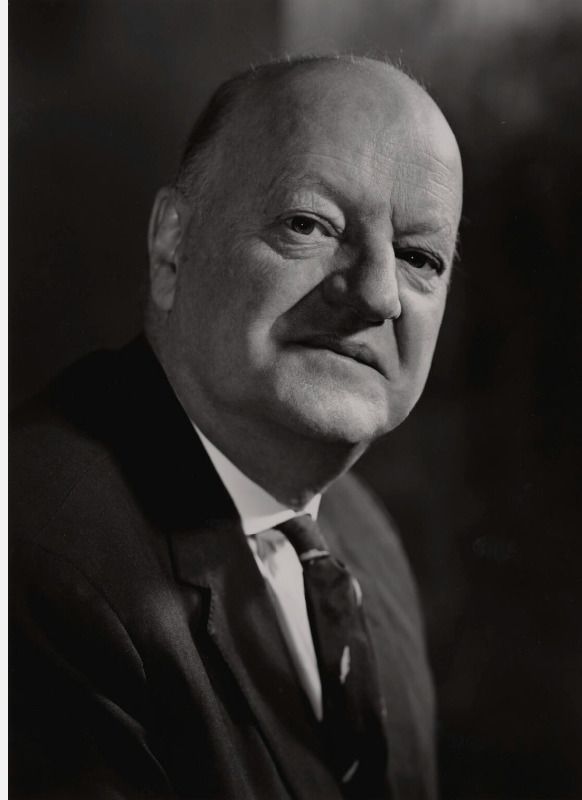
TG Lund 1906-1981
Sir Thomas Lund CBE, Kinnaird Cup finalist in 1936 and EFA Treasurer from 1934-47 was a distinguished solicitor, best remembered as the originator of our national legal aid scheme.
An Old Westminster, in the school first pair in 1925, Lund became the first OW play in the Kinnaird Cup final in 1936, partnering the Aldenhamian AJ Conyers. No other Old Westminster reached the Kinnaird final until Riki Houlden in 2018. He became Treasurer of the fledgling Eton Fives Association in November 1934 and remained in office until the first post-war AGM in 1947. During the course of the war, thanks to some judicious investments, he had almost doubled the EFA's capital holdings from £59 14s 8d to £119 3s 0d.
The following obituary appears on the website of the British Academy of Forensic Sciences, of which Lund was the second President:
"Sir Thomas George (Tommy) Lund CBE (1906–1981) is best remembered as the originator of our national legal aid scheme, an idea he is said to have had in his bath. He first suggested such a scheme in 1944 and it was embodied in the 1949 Legal Aid and Advice Act, the legal equivalent of the National Health Service. The system he planned became the pattern for similar systems in many other countries. That the arrangements he put in place in the UK remained under the auspices of the Law Society until 1989, when a government body assumed control, was a tribute to the structure he devised. No private body before or since has been given responsibility for spending so much public money.
Lund was born in Kensington on 6 January 1906, the younger son of a physician and surgeon, Kenneth Fraser Lund. He was educated at Westminster School and after articles in private practice was admitted solicitor in December 1929. In 1930 he joined the Law Society as an assistant solicitor, becoming an assistant secretary in 1937, and in 1939 became secretary-general, a post he held for 30 years.
In 1941 Lund helped set up the Law Society compensation fund to recompense clients who had lost money because of the actions of fraudulent solicitors, one of whom had been a former president of the Society. In 1942, in response to the huge increase in the number of marriage breakdowns and with the support of the government, the Law Society set up the Services Divorces Department employing solicitors and supporting staff to act on behalf of a divorcing spouse.
On the international scene, Lund was regarded with reverence. National and local bar associations often modelled themselves on the Law Society and incorporated the principles of professional etiquette and conduct that Lund had espoused. He was also behind the formation of the College of Law in 1962. Unlike many of his generation Lund was strongly in favour of the rise of female solicitors and appointed many to work with him in the Law Society. He was made CBE in 1948 and knighted in 1958.
Lund was a tall, imposing man, with a twinkle in his eye, and was much in demand as an after dinner speaker. Said to be no less funny as the chair of a committee than when relaxing after work, his popularity was such that the bar staff at the Law Society had a standing instruction to substitute water for gin once he had had his quota for the evening! He was Master of the Worshipful Company of Solicitors of the City of London and a founder member and second President of the British Academy of Forensic Sciences. On 25 July 1931 he had married Catherine Stirling, with whom he had a daughter, who also became a solicitor. He died at the Middlesex Hospital on 20 April 1981."
